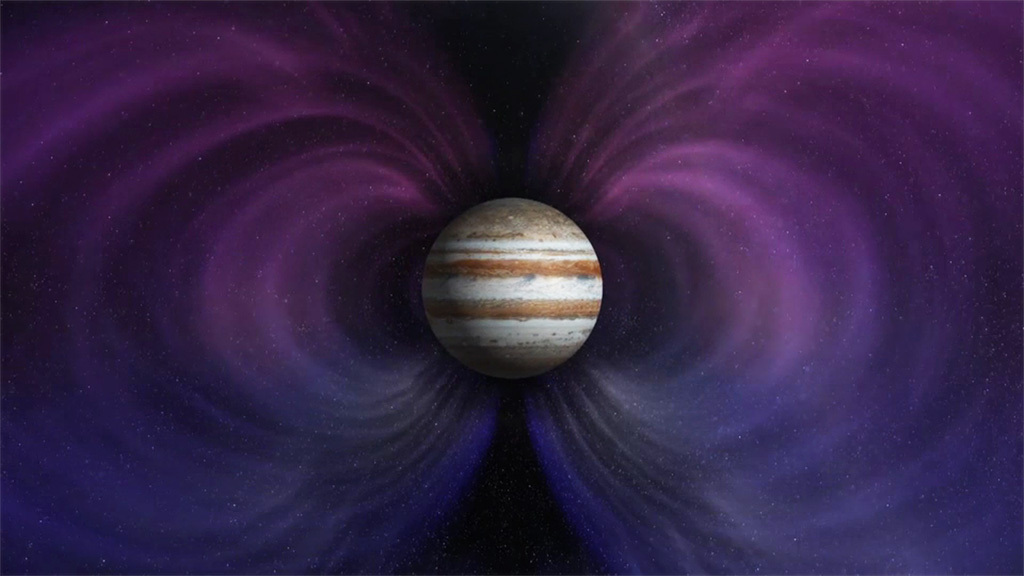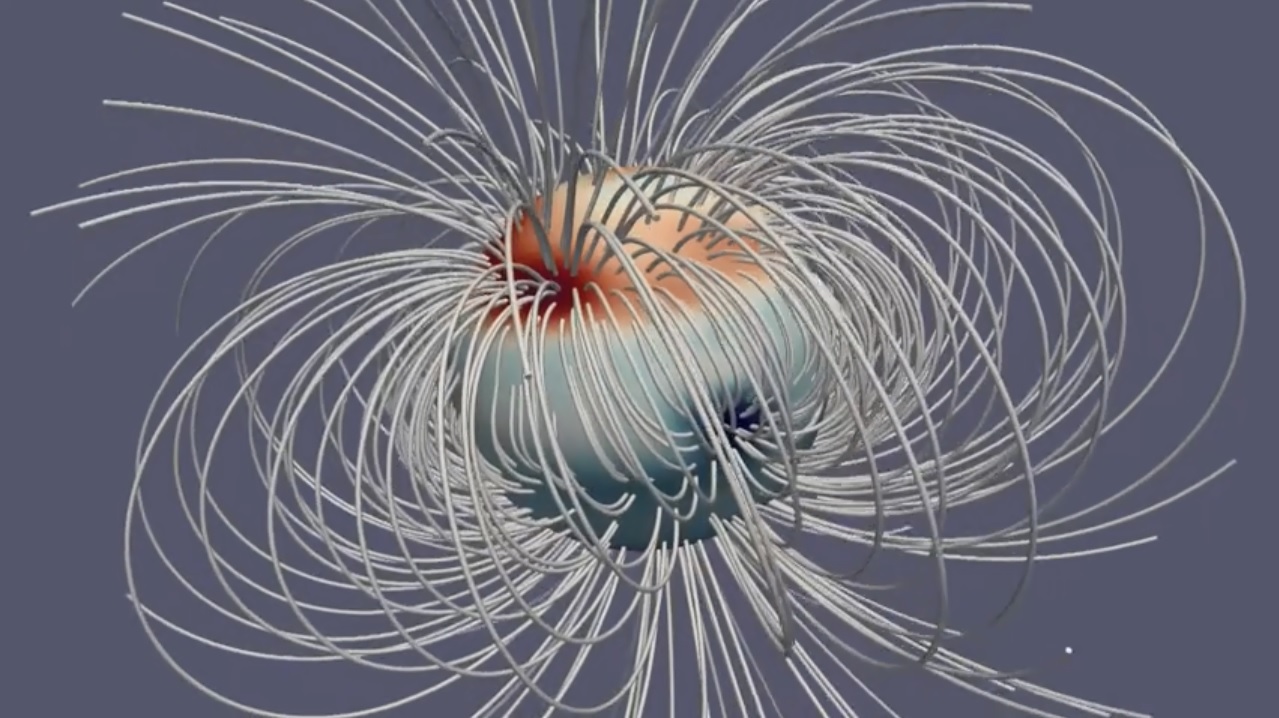Jupiter's Weird Magnetic Field Gets Even Weirder
NASA's Juno spacecraft has mapped the strong magnetic field at Jupiter, revealing a surprising asymmetry between the northern and southern hemispheres that could lend insight into what's going on within the gas giant.
Jupiter hosts the most powerful magnetic field of all the planets in our solar system, cranking out a field close to 20,000 times stronger than Earth's. Juno has braved that magnetic field during the probe's close approaches to the planet since arriving in July 2016; it skims about 2,500 miles (4,000 kilometers) above the planet every 53 days over the course of elongated orbits.
A new paper, published Wednesday (Sept. 5) in the journal Nature, pulls together Juno's measurements to create the most detailed map yet of the Jovian magnetic field at different depths, painting a complex picture. ['Totally Wrong' on Jupiter: What Scientists Gleaned from NASA's Juno Mission]
"We find that Jupiter's magnetic field is different from all other known planetary magnetic fields," the authors, led by Kimberly Moore of Harvard University, wrote in the paper. Like Earth, Jupiter's magnetic field has a primary north and south pole, close to the planet's actual poles as it rotates. But while the gas giant's south pole is relatively orderly, the planet's north pole has one narrow magnetic hotspot amid more chaotic patches of magnetic field, where positive and negative sections don't have concrete counterparts. And the planet has another big magnetic "south pole" close to the equator the researchers refer to this equatorial patch as a "great blue spot" in their paper, in contrast to the planet's swirling Great Red Spot storm. (Blue is often used in diagrams to indicate the negative part of a magnetic field.)
According to a News and Views column accompanying the article, Jupiter's magnetic field is likely generated by a swirling mass of hydrogen deep within the planet. Crushed to incredible pressure, this material becomes a metallic liquid that can conduct electricity and generate a magnetic field when stirred. The heat within the planet, left over from Jupiter's formation early in the solar system's history, creates convection currents that get the liquid moving — not to mention the gases on top, leading to the planet's roiling clouds and storms.
Convection within Earth's iron core also generates our planet's magnetic field, but Earth's field is much more straightforward: mostly positive at one pole, mostly negative at the other, with no particular pattern to the parts that diverge from that.
This strange magnetic field on Jupiter is a hint to what's going on inside the planet. The researchers suggest the Jovian core could be larger and more dilute than previously thought, or the stable layers of fluid within Jupiter could partition off parts of the planet's interior, altering the flow, according to the News and Views story. The state of the planet's field could even — although the paper's researchers suggest this is unlikely — mark the middle of a magnetic field reversal process.
Breaking space news, the latest updates on rocket launches, skywatching events and more!
By modeling the different possible scenarios within Jupiter and the magnetic fields they'd generate, the researchers said, investigators can search for a match with the planet's actual magnetic field to work out what's going on.
Email Sarah Lewin at slewin@space.com or follow her @SarahExplains. Follow us @Spacedotcom, Facebook and Google+. Original article on Space.com.

Sarah Lewin started writing for Space.com in June of 2015 as a Staff Writer and became Associate Editor in 2019 . Her work has been featured by Scientific American, IEEE Spectrum, Quanta Magazine, Wired, The Scientist, Science Friday and WGBH's Inside NOVA. Sarah has an MA from NYU's Science, Health and Environmental Reporting Program and an AB in mathematics from Brown University. When not writing, reading or thinking about space, Sarah enjoys musical theatre and mathematical papercraft. She is currently Assistant News Editor at Scientific American. You can follow her on Twitter @SarahExplains.


